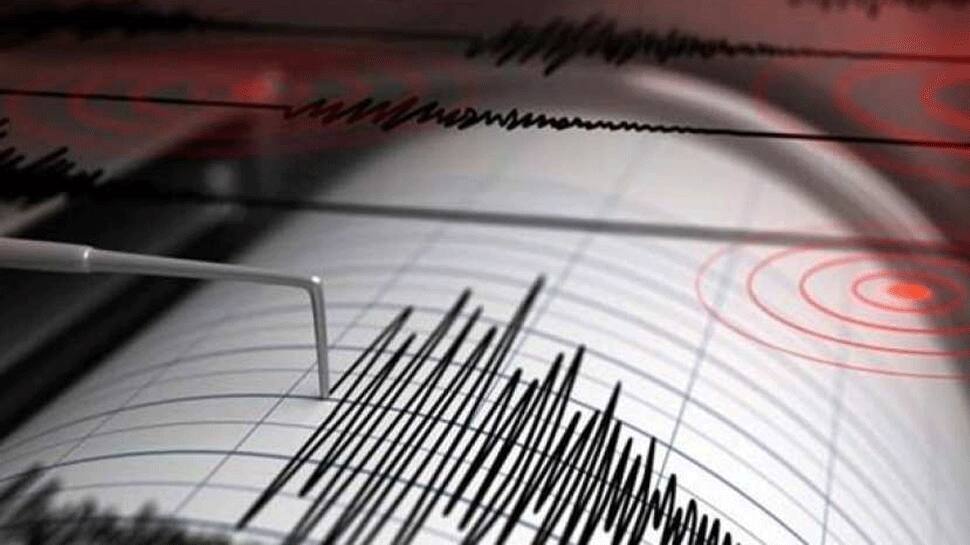Delhi has experienced six earthquakes in the last one month, increasing tension for the people who are already facing troubles due to coronavirus COVID-19 pandemic. Social media have been flooded with memes related to earthquakes and though people are trying to show that they are not too worried by the minor tremors there is no denying the fact that many are concerned over the frequent earthquakes jolting the national capital.
While speaking to Dr Soumitra Mukherjee, Professor of Geology at Jawaharlal Nehru University over the topic, he said that there is no need to worry about it as these tremors occur every year but yes it is necessary to be vigilant.
According to the opinion of experts, there are small earthquake tremors in Delhi which are 3-4 standard on the Richter scale. However, the danger is when the earthquake magnitude is above 4 on the Richter scale, especially on those areas where the houses are not strongly built.
Talking about how safe are Delhi's buildings due to the continuous occurrence of the earthquake, Soumitra said that illegal colonies of Delhi have danger from it. Giving an example over the same, he said, ''During the hearing of a case in 2019, the MCD in the Delhi High Court had said that it believed that about 90 per cent of Delhi's buildings would not be able to withstand a major earthquake, after which the High Court had asked for a safety audit of the houses. Illegal colonies of Delhi, where the city is inhabited by a majority of the population, houses have been erected just like cards. There is no map nor building norms, nor security. Nothing has been taken care of.''
''However, no major earthquake shock has been predicted yet. But because Delhi Seismic Zone reads in four, it is necessary that these houses have a safety audit,'' he added.
On being asked whether the earthquake can be predicted in advance, Professor Mukherjee said, ''Before an earthquake, there are changes in the earth. Experts say that it is possible to assess these changes. Before the earthquake in the earth, the natural vegetation either dries up or becomes very green. It can be detected with high resolution through satellites. Normalized differential weighting index can be used. Interferometry is a subject in which it can be detected by remote sensing whether there has been a change of one or two millimeters in height at any place on earth ... If it has come then it can be evaluated with the state of the art remote sensing method. But the problem is that this method is not being given as much importance.''
Professor Mukherjee also explained the structure of earth below, "There is an ancient rock group under the land of Delhi. It is said to be of the Precambrian period, which consists of quartzite, cyst, granite or pegmatite group. If we talk about seismic zonation of India, Delhi falls in Zone 4 Who is sensitive. That is, there is a high probability of earthquakes here, but even more sensitive areas come in the areas of the Himalayas, Andaman and Nicobar Islands, North East. Delhi has a large population, so even mild shocks make people restless.
Speaking of the major change in the inner surface of Delhi, Professor Mukherjee asserted, ''Experts say that looking at the satellite map shows that the ground level of Delhi is slipping. This level configuration is called en achlon fault. It is like this, as many other bicycles have been parked next to each other and one cycle after the other may fall. The level configuration of Delhi is also made in the same manner in which quartzite or cyst surfaces are made. These surfaces can fall on top of each other if there is a slight shock. This is why so many tremors were felt in Delhi in 1 month.''
Throwing light on Delhi's land formation, Mukherjee said, "Seismic microzonation was done in 1957 in which it was found that Delhi Haridwar Harshal Ridge which connects to the Himalayas, on which many important areas of Delhi are inhabited, is a sensitive zone but a new fault is also developing. This fault is from Asola Bhati Century to Bahadurgarh, its depth is not much, so even if there is a little rain, the moisture rises and enters the earth and the stone gets wet and starts moving. The tremors can be felt. "
The only matter of relief for Delhi is that there is no prediction of any big earthquake made yet. The advantage of three to four small tremors is that the accumulated energy of the earth is removed which eliminates the possibility of a dangerous earthquake.
















